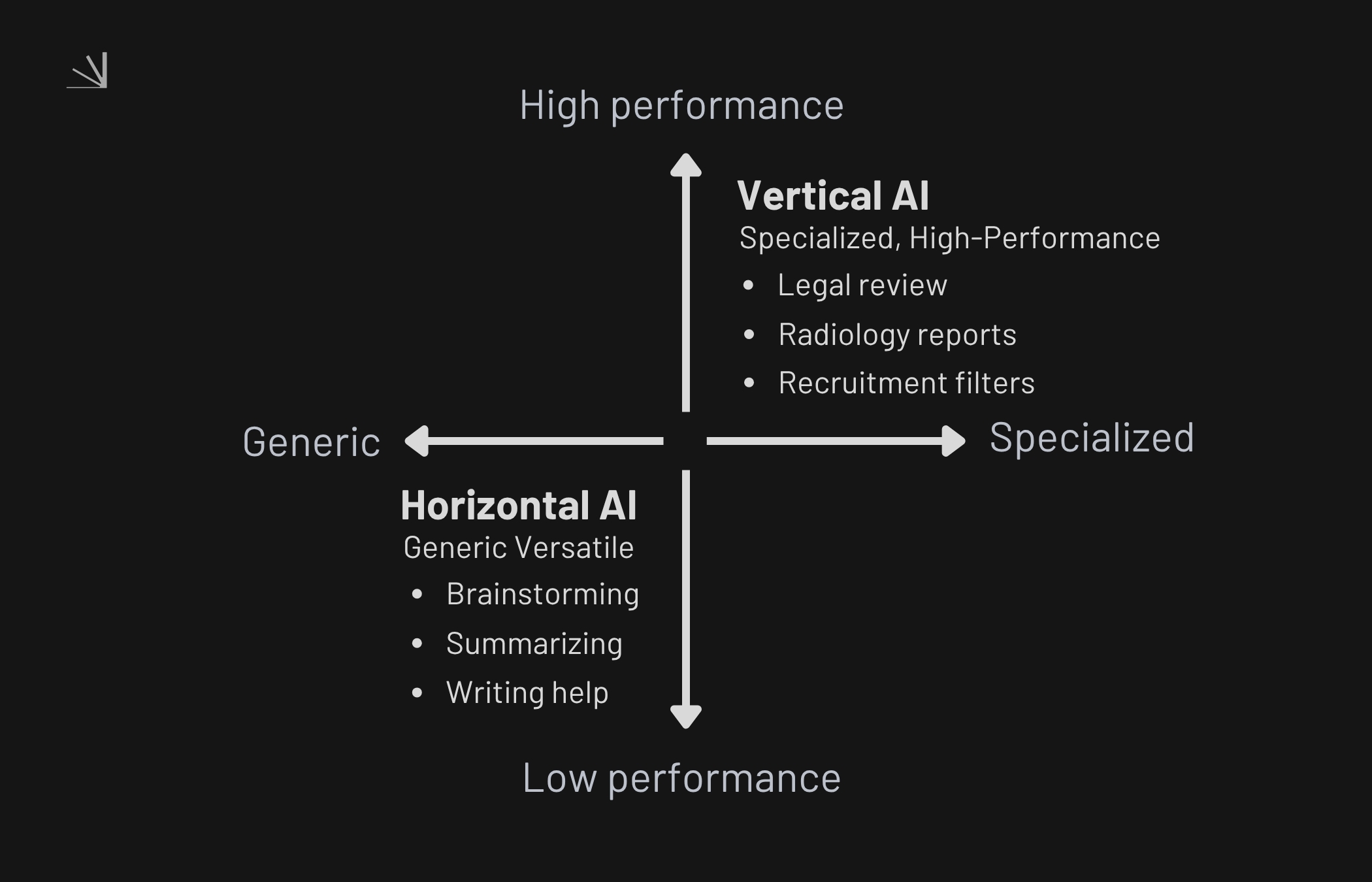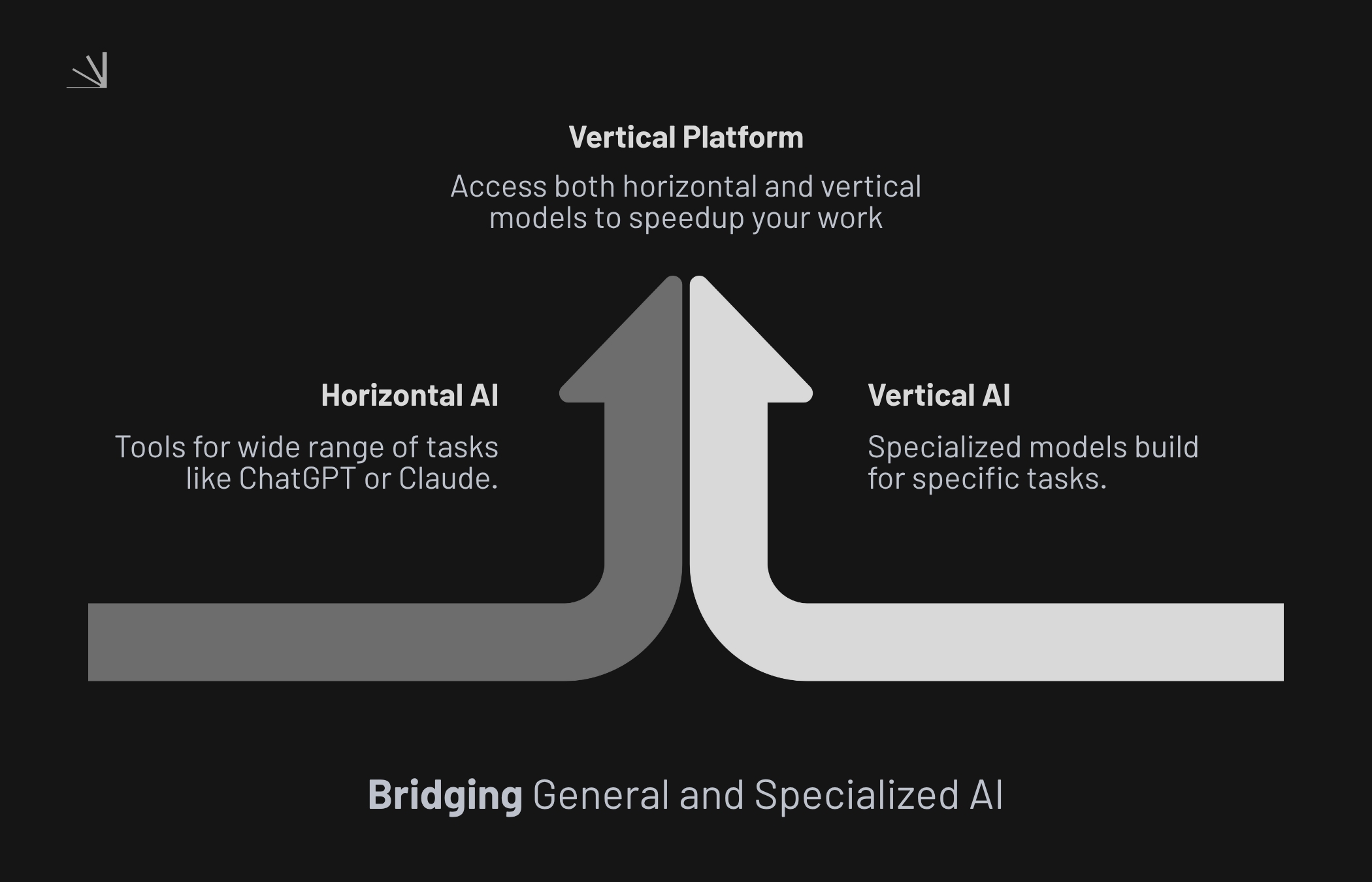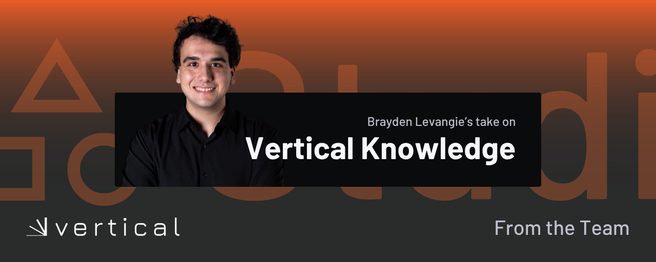
Horizontal vs vertical AI: what’s the difference?
Why do some AI tools deliver exactly what you need, while others fall short? The difference often lies in how narrow, or broadly they're designed.
You probably have used an AI tool to draft an email or brainstorm ideas. It got the job done, but missed the nuance of your industry or workflow. That’s where the distinction between horizontal AI and vertical AI comes in.
Horizontal AI refers to broadly capable models like ChatGPT, Claude, or Gemini. These systems can tackle a wide variety of tasks across industries with no additional training.
Vertical AI is AI tailored to perform exceptionally well within a specific industry, function, or workflow. These models are often fine-tuned to speak the language of legal professionals, radiologists, HR teams, and beyond.
Understanding the difference helps you, businesses and developers choose the right tools for the job. Whether that means streamlining everyday tasks or solving deeply specialized challenges.
Key differences between horizontal and vertical AI
Choosing between horizontal and vertical AI starts with understanding what each model is built for. Horizontal AI is designed to be flexible and widely applicable, while vertical AI aims for depth and precision within a particular context.
Here’s how they compare across key dimensions:
Category | Horizontal AI | Vertical AI |
Purpose | Broad, general use | Specialized tasks or domains |
Scope | Cross-industry and multi-functional | Industry- or function-specific |
Customization | Minimal; general capabilities | High; fine-tuned for niche needs |
Training data | Massive, generalized datasets | Curated, domain-specific datasets |
Performance | Good baseline performance across topics | High performance in narrow use cases |
Flexibility | Adaptable to many tasks, but lacks depth | Deep knowledge in one area; less flexible outside it |
Deployment | Plug-and-play; minimal setup | Requires training or integration into specific workflows |
Maintenance | Managed by provider | May require upkeep by user or developer |
Goal | Help users solve a wide range of tasks | Deliver precision and efficiency in targeted contexts |

Pros and cons of each AI model type
Now that the differences are clear, how do you decide which type of AI fits your use case? Horizontal and vertical AI aren’t in competition, they’re complementary. Each offers distinct advantages depending on the problem you're trying to solve.
Pros and cons of horizontal AI
Pros:
Works across industries and use cases
Excellent for brainstorming, summarizing, or writing
Easy to start with; maintained and improved by model providers
Cons:
Struggles with nuance in niche or regulated domains
May return vague or overly broad answers
Not built to match company-specific terminology or logic
Pros and cons of vertical AI
Pros:
Built for deep expertise within a specific domain
Speaks the language of its target users
Delivers higher accuracy and productivity in focused tasks
Cons:
Requires upfront work: training, testing, validating
May underperform outside its specialization
Long-term upkeep may fall to the organization or developer
Real-world use cases for horizontal and vertical AI
Still unsure which model type is right for you? These examples show how horizontal and vertical AI can approach the same task in different ways. One general-purpose, the other fine-tuned for depth and specificity.
Use Case | Horizontal AI | Vertical AI |
Writing assistants | AI helps users draft articles, blog posts, or generic emails across industries. | A fine-tuned copywriting model built to write personalized email campaigns with optimized CTAs for e-commerce brands. |
Customer support | General chatbot answers FAQs for a variety of businesses. | AI support agent trained on a specific product catalog and ticket history to troubleshoot advanced tech issues. |
Healthcare reporting | AI can summarize public medical articles or general symptoms. | A specialized radiology model generates structured diagnostic reports based on CT scan inputs for a specific hospital. |
Recruitment screening | AI reviews resumes and ranks them based on generic job requirements. | Vertical model tailored for tech startup hiring, screening candidates for specific tech stacks, soft skills, and company fit. |
Financial document processing | AI extracts key figures from financial reports in general. | Fine-tuned AI classifies invoices, receipts, and tax forms using localized accounting standards and terminology. |
How Vertical brings both AI worlds together

At Vertical, we believe the future of AI is not about choosing between general-purpose and domain-specific. It’s about enabling both!
Our platform gives you access to a range of horizontal AI models like ChatGPT, Deepseek, Claude, and others. These are ready to use for tasks like writing, researching, generating visuals, and more.
But Vertical’s real strength lies in what it unlocks:
Users can become creators, fine-tuning base models into high-performance vertical AI tailored to specific industries or problems. Whether you're building a contract review model for legal teams or a deal analysis tool for real estate. Your specialized solution can be shared on Vertical’s credit-based marketplace.
This ecosystem empowers everyone, whether you’re a business user or a developer. With Vertical’s completely no-code platform, you can:
Solve specific problems with laser focus, no coding required
Monetize your expertise by fine-tuning and publishing AI models
Discover, test, and deploy specialized AI solutions at scale
At Vertical, the future of AI is not either/or. It’s both.
Build, explore, or deploy the right AI for your needs.




